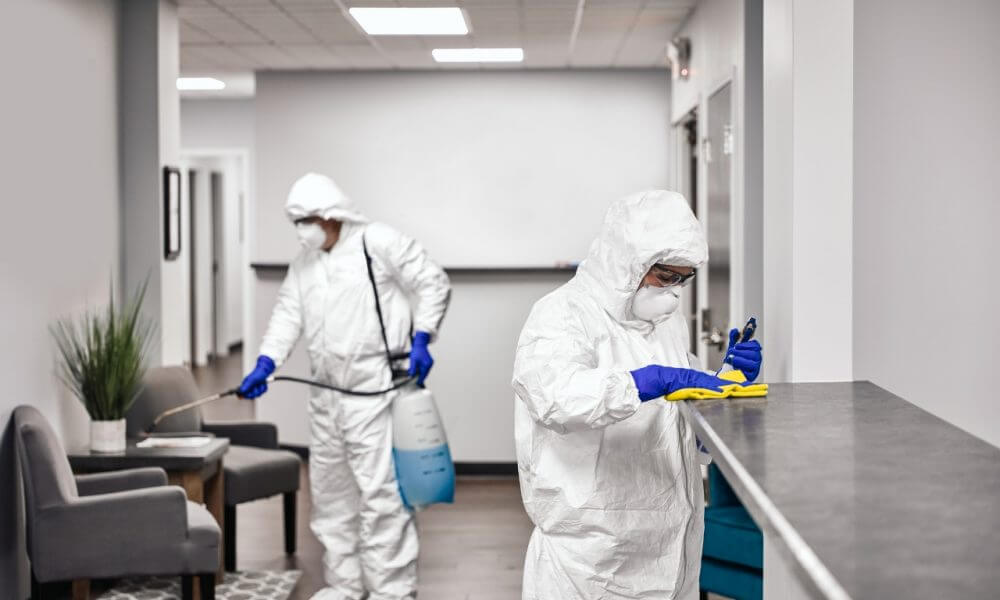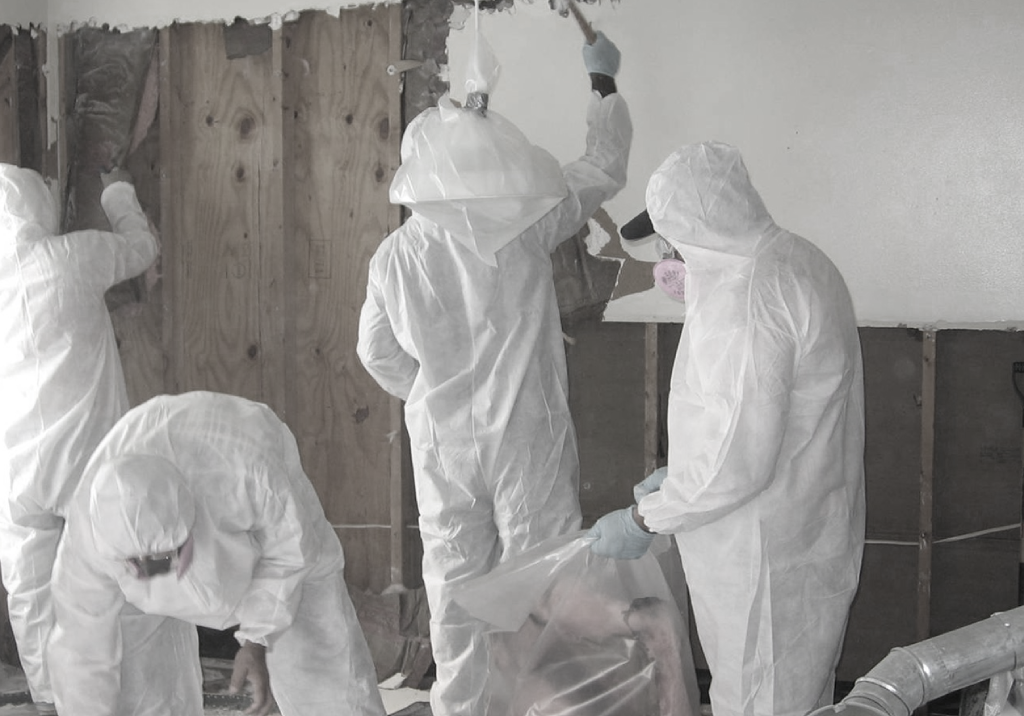Expert Homicide and Suicide Cleanup: Compassionate and Discreet Solutions
Expert Homicide and Suicide Cleanup: Compassionate and Discreet Solutions
Blog Article
Specialist Biohazard Cleansing and Decontamination for Blood, Bodily Fluids, and Hazardous Products
The possible health and wellness threats associated with direct exposure to biohazards underscore the critical need for precise handling and comprehensive clean-up. As we browse the detailed landscape of biohazard cleanup, recognizing the subtleties of policies, compliance, and the specific tools at play comes to be important in ensuring a secure and complete purification procedure.
Health Threats of Biohazard Direct Exposure
Exposure to biohazards poses considerable wellness threats that can result in severe consequences for neighborhoods and people alike. Biohazards incorporate a wide range of biological compounds, including blood, bodily fluids, mold, germs, infections, and various other possibly transmittable products. When people enter into call with these biohazards, whether through accidents, improper handling, or environmental exposure, they face the risk of contracting severe illnesses or conditions.
One of the primary health risks connected with biohazard exposure is the transmission of contagious conditions. Bloodborne microorganisms such as HIV, hepatitis B and C, and different bacteria can be existing in biohazardous materials, positioning a direct risk to human health and wellness. Inhaling airborne biohazards like mold and mildew spores or coming right into call with infected surfaces can also bring about respiratory system concerns, allergies, and other adverse health results.
In addition, biohazard direct exposure can have long-lasting health and wellness ramifications, with some diseases manifesting years after the preliminary call (Blood Cleanup). Therefore, it is critical to focus on proper biohazard cleansing and purification to reduce these wellness dangers and guarantee the safety of neighborhoods and individuals

Specialized Training for Biohazard Cleaning
When it concerns handling biohazard clean-up efficiently and safely, specialized training plays a fundamental function in making certain proper purification procedures are adhered to. Biohazard cleanup calls for certain knowledge and abilities to efficiently minimize risks related to bloodborne pathogens, physical fluids, and unsafe materials. Specialists trained in biohazard clean-up undergo extensive direction on how to securely handle, eliminate, and dispose of biohazardous products to stop contamination and exposure.
Specialized training for biohazard cleanup covers a variety of necessary subjects, consisting of correct individual safety tools (PPE) use, bloodborne virus awareness, decontamination methods, and contaminated materials disposal methods. People educated in biohazard cleaning are equipped with the necessary competence to examine contamination degrees, recognize possible threats, and apply ideal cleaning treatments in compliance with regulatory criteria.
Continual training and education and learning are vital in the field of biohazard cleanup to remain upgraded on the most current decontamination technologies, safety methods, and guidelines. By purchasing specialized training, biohazard cleanup specialists can properly reply to emergency cleaning scenarios and secure both public health and wellness and the environment.
Importance of Correct Decontamination Techniques
Making use of correct purification methods is essential in biohazard cleanup to properly decrease and get rid of dangerous materials health and wellness threats. Reliable decontamination not only makes sure the removal of noticeable traces of blood, bodily liquids, and other biohazards however also targets undetectable pathogens that might pose significant health and wellness hazards otherwise correctly eradicated. By adhering to rigid decontamination methods, educated specialists can substantially lower the risk of exposure to hazardous microbes, viruses, and bacteria that might result in infections or diseases.
Correct decontamination techniques include using specific equipment and disinfectants that are particularly made to neutralize biohazards successfully. Comprehensive cleansing and disinfection of infected locations are vital to stop the spread of virus and ensure a safe environment for passengers. Furthermore, the proper disposal of biohazardous waste following decontamination procedures is important in protecting against contamination of various other surface areas or people.

Devices and Tools for Safe Clean-up
When dealing with blood, physical liquids, or harmful products, biohazard cleaning specialists rely on specialized equipment to minimize direct exposure risks and completely decontaminate the damaged area. In addition, biohazard cleaning packages containing disinfectants, absorbing materials, and biohazard bags are used to securely include and get rid of of contaminated things.
Advanced cleaning devices like hospital-grade disinfectants, HEPA-filtered vacuum cleaners, and fogging devices are used to sterilize surface areas and get rid of biohazards efficiently. Specialized equipment such as sharps containers and biohazard waste disposal containers are utilized to securely handle sharp items and biohazardous waste products. By utilizing the best tools and devices, biohazard cleansing professionals can make sure a complete cleaning process that prioritizes safety and security and minimizes health dangers for both employees and occupants of the afflicted room.
Rules and Conformity in Biohazard Cleaning
Proper adherence to policies and compliance criteria is paramount in biohazard cleaning to make sure the safety and security of both employees and the environment. Government agencies such as OSHA (Occupational Security and Wellness Management) and the EPA (Environmental Protection Agency) have established particular standards for biohazard cleaning treatments to minimize health threats and ecological contamination. These regulations cover a variety of facets including the handling, transport, and disposal of biohazardous products, along with the necessary training and safety devices needed for workers associated with the clean-up procedure.
Biohazard cleansing business must stay up-to-date with these laws to ensure that their procedures meet the needed safety standards. Failing to wikipedia reference follow these policies can cause serious consequences, consisting of fines, lawsuit, and threatening the health of people and the environment. By adhering to rigid regulations her comment is here and conformity steps, biohazard cleaning firms can properly mitigate threats and guarantee a extensive and safe cleaning process for all events included.
Verdict
In final thought, biohazard cleansing and decontamination call for specialized training, correct techniques, and adherence to laws. Exposure to blood, physical fluids, and harmful materials poses considerable wellness risks, making it critical to use the ideal equipment and tools for secure clean-up. By following stringent methods and standards, professionals can successfully minimize the dangers connected with biohazard direct exposure and make certain the safety of both themselves and others.
As we navigate the detailed landscape of biohazard cleaning, understanding the nuances of guidelines, conformity, and the specialized equipment at play ends up being essential in making sure a secure and thorough purification procedure. (Blood Cleanup)
When it comes to handling biohazard cleanup effectively and safely, specialized training plays an essential function in making sure correct purification treatments are followed.Utilizing proper decontamination methods is critical in biohazard cleanup to effectively eliminate harmful products and lessen health risks. Furthermore, biohazard cleansing packages consisting of disinfectants, absorptive materials, and biohazard bags are utilized to safely include and get rid of of contaminated things.
Federal government firms such as OSHA (Occupational Security and Health Administration) and the EPA (Environmental Defense Company) have developed details guidelines for biohazard cleanup treatments click this link to lessen health and wellness risks and ecological contamination.
Report this page